Try Soft Light For Great Portraits
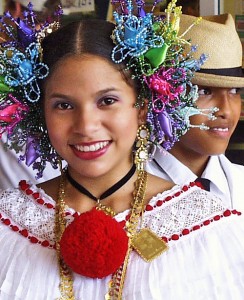
Dancers under a canopy lit only by soft skylight from one side. Photo © Jerry Biollo
By Arthur H. Bleich–
In the early days of amateur photography, enthusiasts were always being warned to “keep the sun at your back” because films were slow and needed lots of light to record a decent image.
But before photography became the beloved hobby of the masses, Victorian studio photographers had discovered that the best way to light their subjects was to avoid the sun altogether. They set up indoor studios with huge, angled, glass skylights that flooded their customers with diffused light and, if exposures had to be long, well, the results were well worth it.
Iron stands with head clamps kept subjects from moving during the sometimes-several-minutes it took to make a picture. The results, though, were beautifully-lit portraits that seemed to mirror the subjects’ souls.
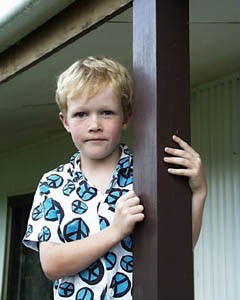
Soft light brings out beautiful flesh tones. Photo © Kane Archer
You can get the same effect by posing your subject outdoors almost anywhere that’s not in direct sunlight– in the shadows of large buildings, under big trees or almost anywhere on overcast days. Indoors, use light from large windows that don’t have sun streaming through them. In both cases, the lighting is softer than harsh, directional sunlight and unflattering shadows and ugly sun splashes are avoided.
Because your subjects’ eyes won’t be blasted with strong light, they’ll be relaxed- even eager to pose for more photos than usual. Young children and teens who sometimes complain when it comes to picture-taking sessions, respond especially well to soft light shooting sessions.
The quality of light will vary because, even in shade, lighting can still be directional. For example, if your subjects are under a large tree, light may be hitting them from the sides, whereas if you’re shooting in the shadow of a large building, it will usually come from the sky above, similar to Victorian studio lighting. On overcast days, the light will be very even and appear to wrap around subjects from all angles.
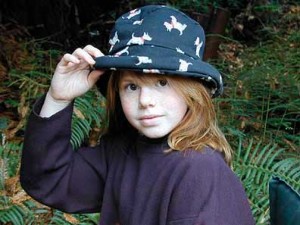
With a dense forest for a background, soft light from the sky is all that’s needed for a stunning portrait. Photo © Jim Rubino
Until you begin to notice these subtle differences, have your subjects turn from time to time and take pictures of them from different directions. All the pictures will turn out with fairly even lighting, but some may have more pronounced shadows than others, giving a greater sense of roundness and depth to faces. After awhile, you’ll soon recognize ideal soft light conditions as well as some favorite spots to use as your outdoor (or indoor) studio.
Here are a few things to remember when you shoot portraits in soft light:
- Make absolutely sure your flash is set to “off” or you’ll ruin the effect you’re trying to achieve.
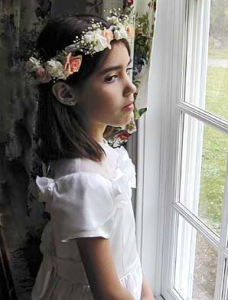
Indoor windows and glass doors are an excellent source of soft light. Photo © Paul Tirado
- If you shoot under a tree on a sunny day, avoid areas where splashes of sunlight may filter through the branches, forming a pattern on your subject’s face. These may not be obvious at first because usually they’re not very bright, but they will spoil your pictures. If you can’t get rid of them by moving your subject, find another tree or a different shady spot.
- Very deep shade and very dark overcast days produce light so flat, your pictures will lack contrast; most highlights –and even soft shadows– will be lost making faces look rather lifeless. While not fatal, it’s best not to shoot under these conditions.
- Begin by shooting your subject standing or sitting, framing them from about the waist up. Have them look directly at the camera’s lens, but their body does not have to be flat on to the camera. They can be arranged anyway you wish– three quarters to the camera, sideways, even looking over their shoulder but eye contact should be made with the camera for most of your shots. In order not to make very young subjects look insignificant, you may want to get down on their level by sitting on a chair or stool.
-

Pets look especially beautiful under soft light and retain details in light and dark coloring. Photo © Arthur H. Bleich
The background should be simple and not intrusive. Keep your subject at lease three feet from a wall or other plain background) to give some separation and eliminate distracting background shadows.
- Do not use the wide angle setting on your zoom; instead shoot “normal” or full telephoto. Shooting “wide” will distort the subjects’ faces and make their chins and noses protrude, and ears recede. It will also include more of the background than you may want. Using a telephoto setting (coupled with a large aperture) will soften the background by throwing it out of focus and also give faces a very nice proportional look.
- The subject should be dressed in clothing that can be informal or formal but not full of clashing colors which might distract from their faces. The reason black and white excels as a portrait medium is that it neutralizes color and takes you right to the subject’s face and eyes. Color is a tougher medium for portraits.
Once you see the beautiful pictures you can take without having the sun intrude, you may find that soft light and portraiture were made for each other– something Victorian studio photographers discovered more than a hundred years ago.
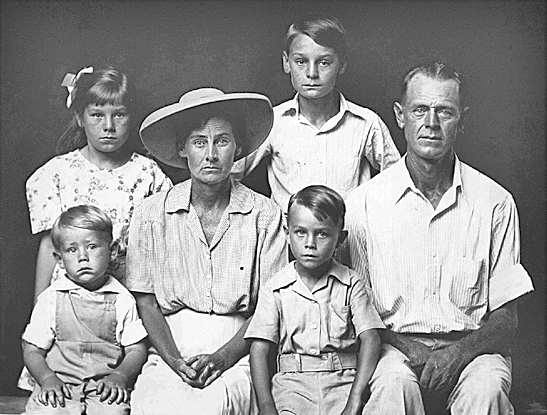
A huge glass window was the only studio lighting used for this 1940s Arkansas family portrait. Photo © Michael Disfarmer.
Original Publication Date: January 12, 2016
Article Last updated: January 12, 2016
Related Posts and Information
Categories
About Photographers
Announcements
Back to Basics
Books and Videos
Cards and Calendars
Commentary
Contests
Displaying Images
Editing for Print
Events
Favorite Photo Locations
Featured Software
Free Stuff
Handy Hardware
How-To-Do-It
Imaging
Inks and Papers
Marketing Images
Monitors
Odds and Ends
Photo Gear and Services
Photo History
Photography
Printer Reviews
Printing
Printing Project Ideas
Red River Paper
Red River Paper Pro
RRP Products
Scanners and Scanning
Success on Paper
Techniques
Techniques
Tips and Tricks
Webinars
Words from the Web
Workshops and Exhibits
all
Archives
January, 2025
December, 2024
November, 2024
October, 2024
September, 2024
August, 2024
July, 2024
June, 2024
May, 2024
more archive dates
archive article list




